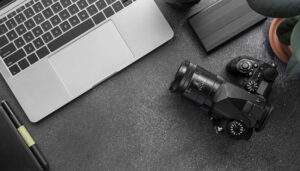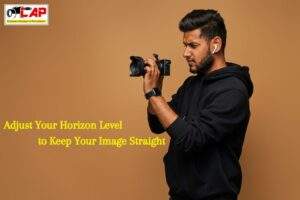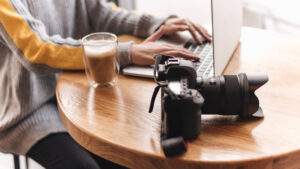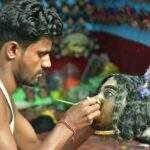You’ve decided to take your passion for photography seriously, and you might have even bought your first camera or started researching photography courses. Then comes the important question that every beginner needs to respond to:
What gear do I actually need to get started?
With so many cameras, lenses, and accessories on the market, it’s easy to get overwhelmed. Actually, you don’t need the most expensive equipment to take great photos. It’s more crucial to comprehend your equipment and use it creatively.
We’ll streamline things in this tutorial by providing prospective photographers with a useful equipment list that just covers the necessities (and items that are worthwhile investing in).
1. The Camera: Your Creative Tool
Like a paintbrush, the camera can help you express your vision. However, before spending money on pricey equipment, start with what meets your needs and financial constraints.
Types of Cameras for Beginners
1. DSLR Cameras
- Why make a choice: dependable, durable, and widely used for a long time.
- Ideal for: Novices who like traditional control and long battery life.
- Canon EOS 200D, Nikon D5600, and Canon 90D are a few examples.
2. Mirrorless Cameras
- Why make a choice: Small, light, and loaded with state-of-the-art technology.
- Ideal for: Vloggers, travelers, and producers of hybrid images and videos.
- Examples include the Fujifilm X-S10, Canon M50 Mark II, and Sony ZV-E10.
Camera Features to Look For
When shopping for your first camera, focus on:
- Learning ISO, shutter speed, and aperture requires using the manual mode.
- Lens interchangeability: For adaptability as you mature.
- Excellent low-light performance: Beneficial for indoor or nighttime photography.
- Handling ease: It ought to be cozy in your palms.
Remember: The best camera is the one you’ll actually use.
2. The Lenses: How You See the World
The lens is your eye, if the camera is your paintbrush. It influences narrative, depth, and viewpoint.
Most beginners start with the standard 18–55mm kit lens, which has a fair range. But as you get more skilled, shifting your perspective can make a big difference.
Types of Lenses to Consider
1. Prime Lens (Fixed Focal Length)
- Example: 50mm f/1.8 (“Nifty Fifty”)
- Why you need it:
- produces beautiful bokeh, or background blur.
- In dim light, it performs well.
- Lightweight, sharp, and reasonably priced.
- Best for: Portraits, indoor, and artistic photography.
2. Zoom Lens
- Example: 18–135mm or 24–70mm
- Why you need it:
- Adaptable to events and travel.
- Enables you to take pictures without getting closer or farther away.
- Best for: Beginners exploring multiple genres.
3. Wide-Angle Lens
- Example: 10–22mm
- Why you need it:
- Captures huge architectural or landscape views.
- Gives pictures a dramatic perspective.
- Best for: Travel, interiors, and nature lovers.
4. Telephoto Lens
- Example: 70–200mm
- Why you need it:
- Excellent for candid photos, sports, and nature.
- Enables distant photography without sacrificing subject sharpness.
3. Lighting: The Heart of Every Great Photo
An everyday shot might become amazing due to the lighting. Without an understanding of how light works, even the best camera won’t be of any use.
Natural Light
Learn to work with natural light before spending money on equipment; the golden hour, which is early in the morning and late in the afternoon, creates lovely, gentle tones.
Pro Tip: During photography courses, you’ll often learn how to control natural light using reflectors, diffusers, and shade positioning — simple tools that can make a big impact.
Artificial Lighting Gear for Beginners
1. LED Continuous Lights
- Excellent for product photography and inside scenarios.
- Enables you to check the lighting before pressing the shutter button.
- Simple to use for both filming and taking pictures.
2. External Flash (Speedlight)
- Produces gentle, organic effects by reflecting light off of walls or ceilings.
- It’s portable and perfect for nighttime or event photography.
3. Softbox or Umbrella Kit
- Evenly distributes light on your subject.
- Ideal for studio work and portraiture.
4. Reflectors
- Returns light, either artificial or natural, to the subject.
- Lightweight, reasonably priced, and essential for novices.
4. The Tripod: Your Steady Companion
Tripods are among the most undervalued pieces of gear. It stabilizes your camera and ensures crisp images in long-exposure situations.
- Lightweight tripods: Great for travel and outdoor shooting.
- Sturdy models: Perfect for studio or landscape photography.
Uses:
- Long exposures (night sky, waterfalls, traffic trails)
- Self-portraits or time-lapse videos
- Product and macro photography
5. Memory Cards, Batteries & Storage
During a shoot, no photographer wants to run out of power or room! Keep backups at all times.
- Memory Cards: Go for fast, high-capacity cards (64GB or higher).
- Extra Batteries: A must for outdoor or travel shoots.
- External Hard Drive: For storing your photos safely and organizing projects.
6. Editing Software
Taking pictures is only half of the story; post-processing makes your images look professional.
Essential Tools:
- Adobe Lightroom: For color correction, contrast, and exposure.
- Adobe Photoshop: For detailed retouching and creative edits.
- Capture One / Affinity Photo: Great alternatives for professionals.
The majority of photography courses contain software training modules if you’re new to editing, which will teach you how to improve your images without going overboard.
7. Optional Accessories Worth Having
Once you’ve got your basics, here are a few small but useful add-ons:
- Camera Bag: To protect your gear while traveling.
- Lens Cleaning Kit: For dust-free images.
- Remote Shutter Release: Prevents camera shake during long exposures.
- ND Filters: Helps control brightness during daylight shooting.
Despite their seemingly insignificant appearance, these accessories will improve the efficiency and professionalism of your photography operation.
Why Enrolling in Photography Courses Can Help You Choose Better Gear
With the correct direction, it’s easy to understand your tools. In addition to teaching composition and camera techniques, the best photography courses also help you choose the right equipment, so you can make informed investments.
Here’s what you’ll gain:
- Hands-on training with cameras, lenses, and lighting setups.
- Guidance from professionals who share real-world insights.
- Portfolio-building projects that help you practice with actual gear.
- Industry exposure through workshops and exhibitions.
Whether photography is your passion or your career, a disciplined learning environment provides you with the clarity and self-assurance you need to advance.
Conclusion
Knowing how to use what you have is more important for photography than having the newest, most costly equipment. Begin modestly, learn the fundamentals, and follow your imagination.
Take professional photography courses in Kolkata to hone your artistic vision, learn how to manipulate light, and become an expert with your camera’s settings. You’ll quickly discover that you’re taking pictures that feel alive in addition to looking fantastic with the correct advice and equipment.











